Papua New Guinea didagur mask
head : H 47 cm W 41 cm D 43 cm
nose L 53 cm reed leaves L 108 cm
€ 1.200,00
Prijs incl. 6% BTW & Verzendingskosten
Meer informatie
We present a rare unique male mask that was made in the middle of the last century in a village located on the black water tributary of the Sepek, eastern Indonesia, now called Papua New Guinea. It was found by a physician in the 1980s in an abandoned village north of Kiunga. It hung in front of the chief’s or medicine man’s hut. This didagur or helmet mask is characterized by a typical long nose. The latter indicates a male spirit that probably lived in water or in hollow trees. The flap of the mouth is open so that the wearer of the mask could see. When not in use, the masks hang from the ceiling of a special house made for them. When not in use they just hung outside to rot. The elaborate wickerwork of the head and nose is painted with a thick layer of clay with red, white and black color pigments. Occasionally the mask is woven to form an almost full body outfit. The bottom of the skirt is made of reed leaves which is intended to partially hide the dancer. Only men were allowed to wear such masks and they had to be initiates of the sect that made these masks. They were often used in male initiation ceremonies. Women were not allowed to view these masks and not come near the huts that wore these masks. The mask has a three-dimensional head where height, length and depth are almost identical. In the center of the front runs a thick comb that ends in the nose. Distally on both sides we see a round bulging eye. Also running around the sides of the face mask are two woven reed combs that form the sides of the nose. At the bottom of the front is a woven oval moving flap as a mouth that served to see through. At the bottom, the mask is tightly woven all around. Brown reed leaves are knotted around it, which run downwards as dozens of separate strips over a length of cm. The base of the mask is open so that the wearer’s head can pass through the brown reed leaves, in order to be able to wear the mask during ceremonial ceremonies. The nose runs forward and downward and has a length of cm. I have not been able to find an analog mask on the internet. It may therefore be a unique piece. It was probably made around 1960-70.
Condition: there is a discreet loss to the woven nose; some of the clay granules are cracked or have disappeared, although the color pigments remain clearly visible; the long brown reed leaves in the back come off easily. Overall still in good condition.
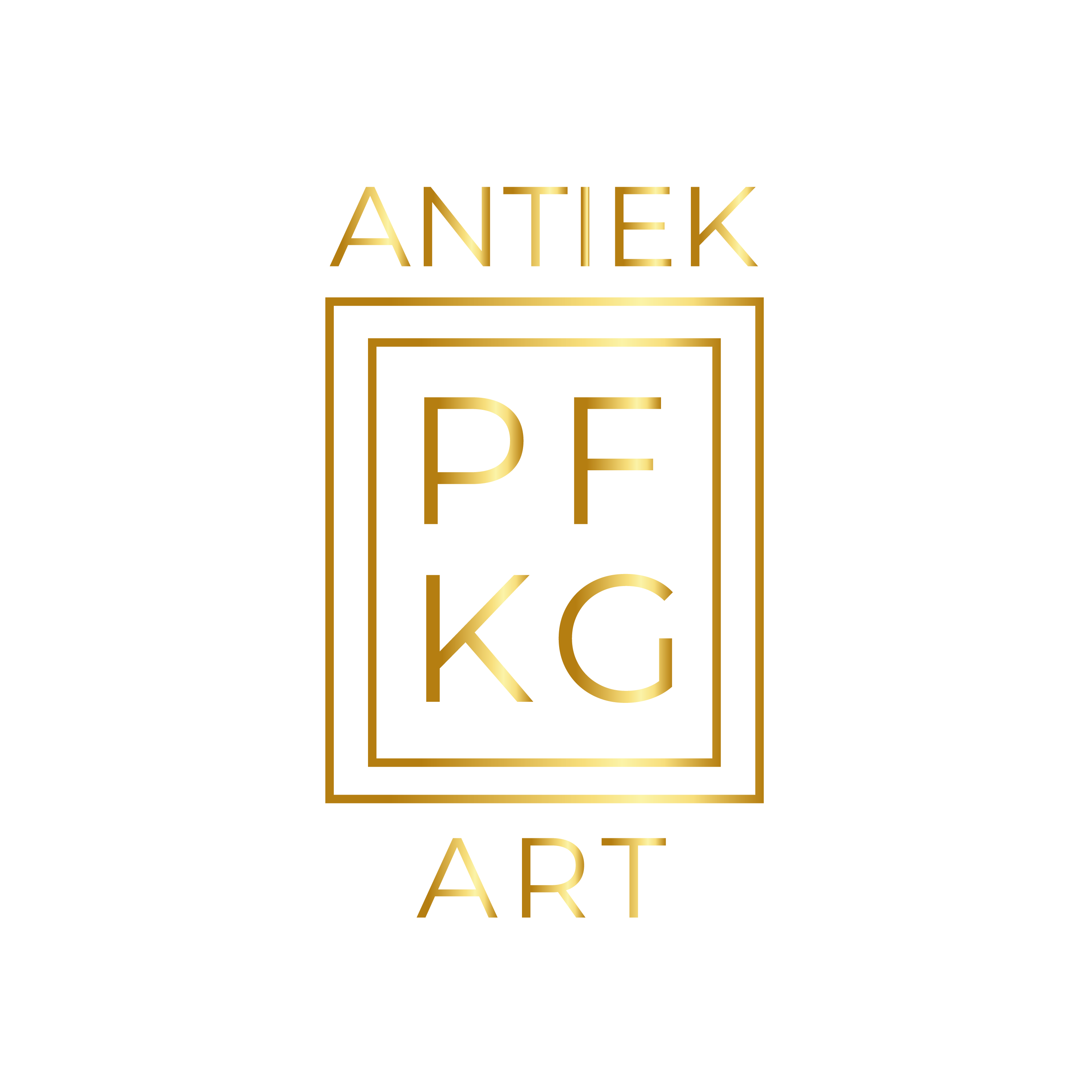

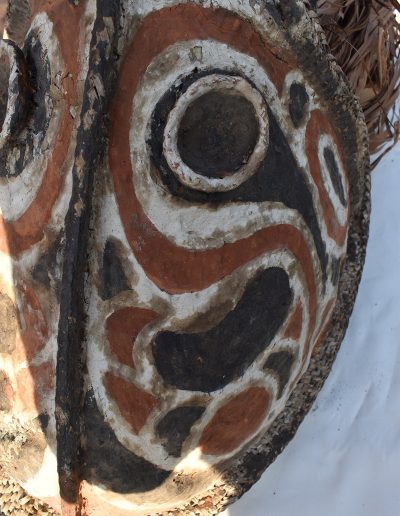
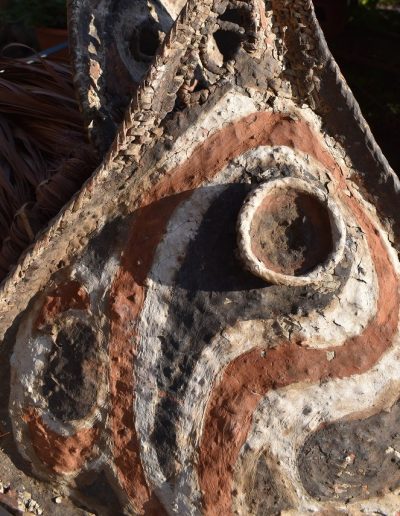
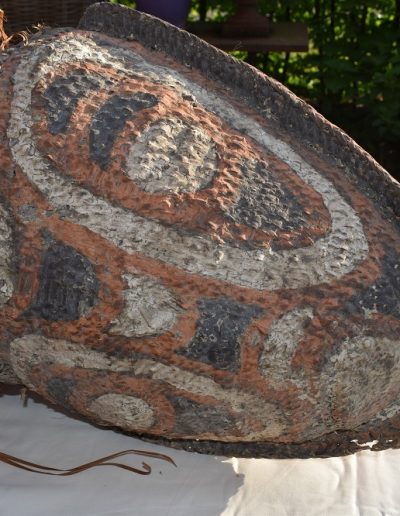
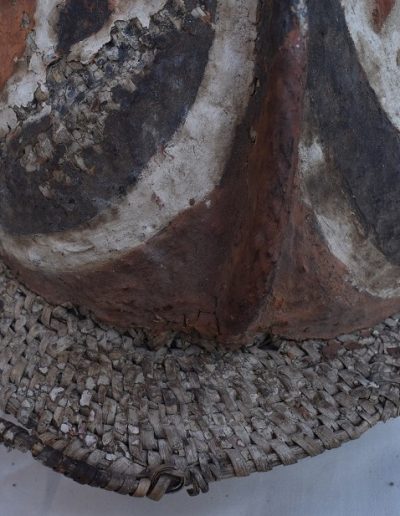


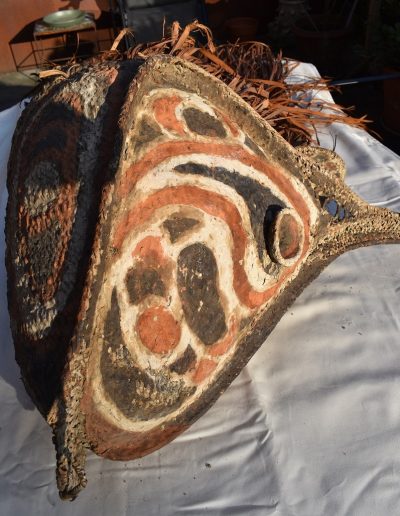
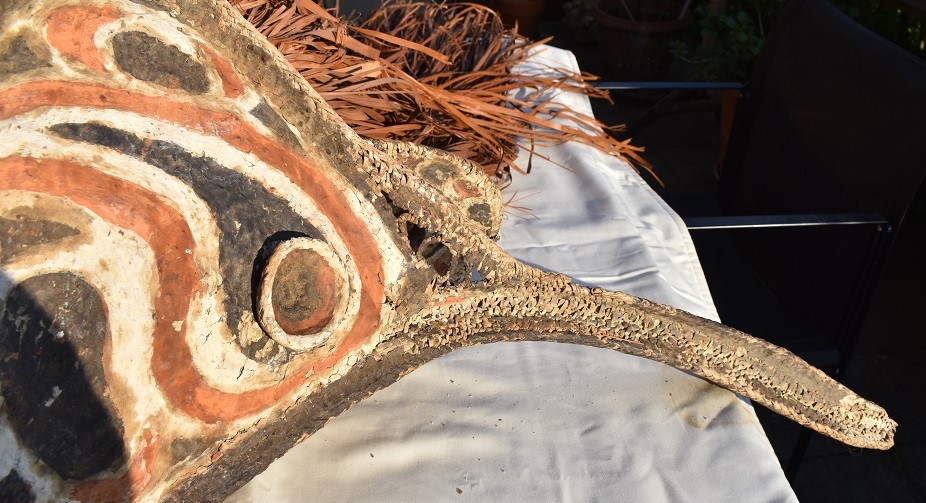
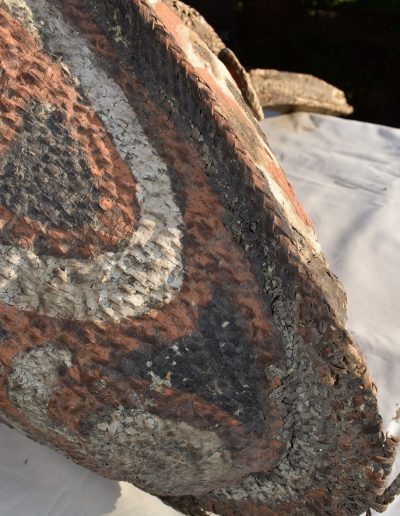

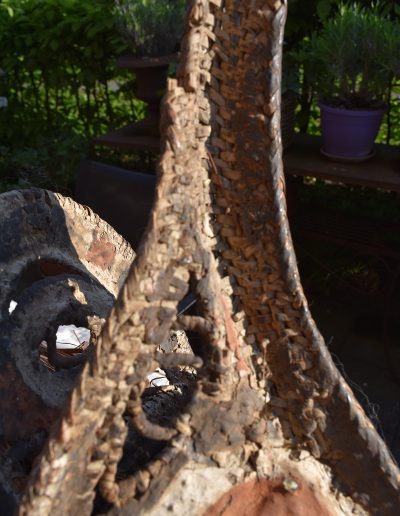


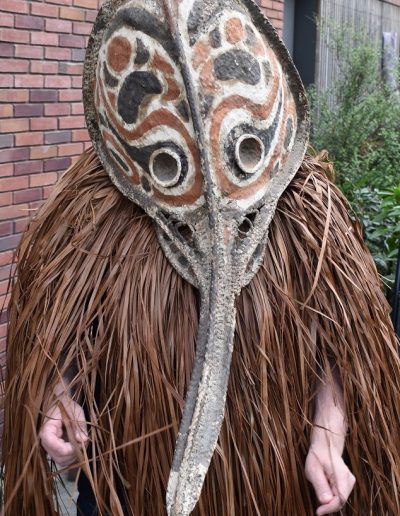
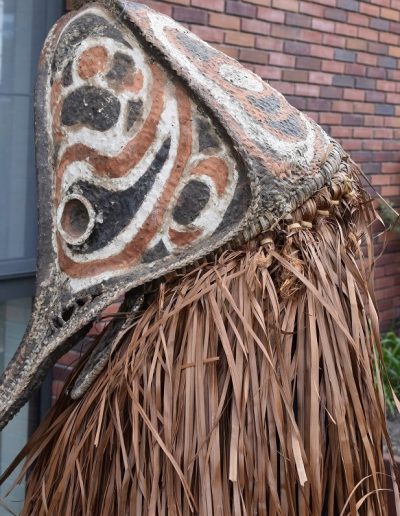
Reviews